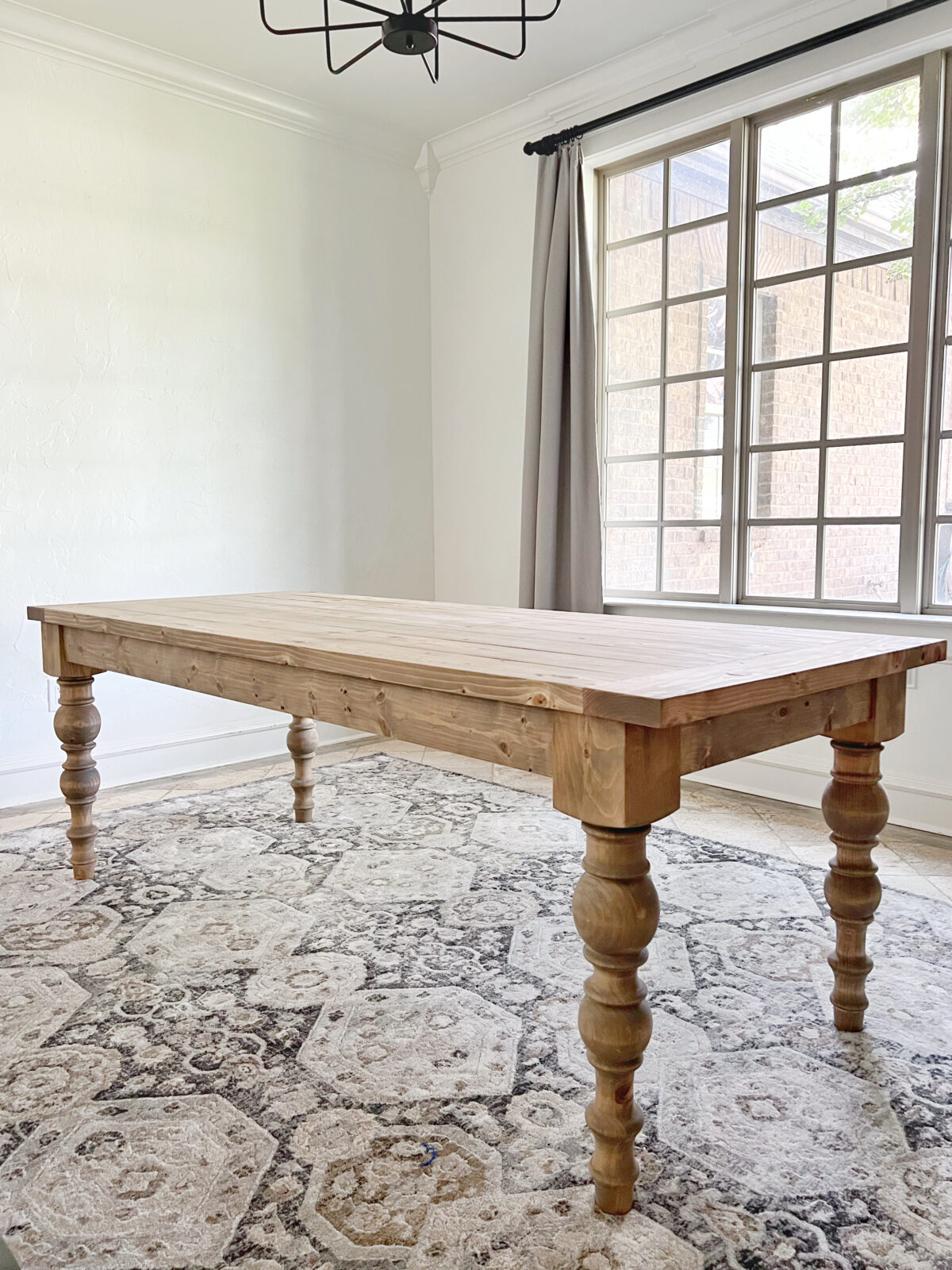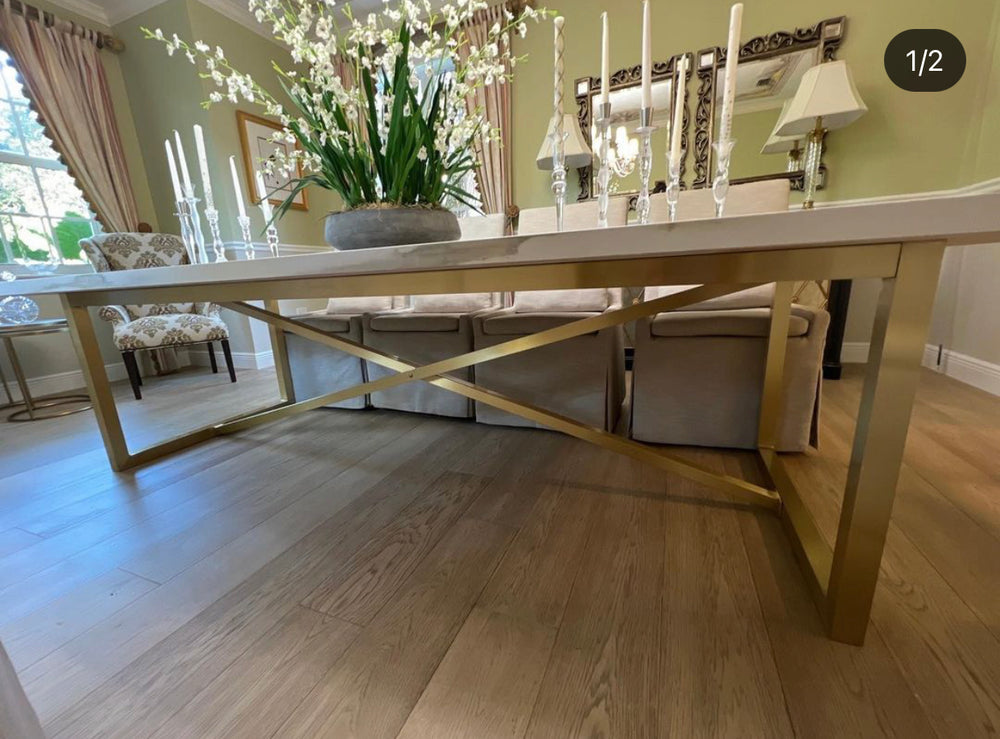Leading Patterns in Dining Room Table Legs to Raise Your Dining Room
Leading Patterns in Dining Room Table Legs to Raise Your Dining Room
Blog Article
Picking the Perfect Dining Table: What Styles Work Best for Your Home?
Picking the perfect dining table for your home can be a nuanced process that stabilizes visual appeals and performance. To browse these selections efficiently and locate a table that absolutely matches your home, think about the complying with facets in detail.
Analyzing Your Room
Reviewing the measurements and layout of your dining area is an essential very first step in picking the ideal table. Begin by measuring the length and size of the space, representing doorways, windows, and other building functions that might influence table positioning. This guarantees that your table not only fits yet likewise enables comfy activity around it.
Take into consideration the number of people you normally captivate. A table should fit your household's everyday needs while using sufficient versatility for occasional visitors. Generally of thumb, allot a minimum of 24 inches of table width per individual to make certain a comfortable eating experience.
It's likewise important to keep appropriate clearance around the table. Preferably, there need to go to the very least 36 inches in between the table edge and walls or various other furniture, enabling simple access and movement. For spaces where chairs with arms or added storage space devices like buffets are included, raising this clearance to 48 inches is suggested.
Lights and atmosphere play substantial duties as well. Guarantee that your dining table straightens with existing lights fixtures or prepare for adequate lighting remedies. This extensive spatial evaluation guarantees that your dining table not just fits literally but likewise balances with your space's general performance and aesthetic.
Popular Table Styles

Traditional table commonly feature ornate details, curved legs, and abundant timber finishes, stimulating a sense of ageless elegance. They are best for homes with timeless decor or those wanting to include a touch of elegance to their dining area.
Modern eating tables prioritize simplicity and tidy lines, typically including materials like glass and steel. These tables are optimal for contemporary rooms, offering a sleek and clean look that enhances minimalist style ideologies.
Rustic table, on the other hand, stress natural materials and a handcrafted look - dining room table legs. They frequently include recovered wood and a troubled surface, producing a warm and inviting ambience. These tables function well in farmhouse-style homes or those looking for a comfortable, organic feel
Industrial dining tables combine resources such as metal and timber, usually showcasing a practical visual. This style is well-suited for lofts or metropolitan areas, adding a touch of sturdy beauty and toughness to the dining experience.
Each style provides unique advantages, making it vital to select one that lines up with your home's total layout and site link your individual choices.
Product Options
When choosing a table, the choice of product plays a vital duty in identifying both the table's aesthetics and capability. Wood, metal, glass, and composite materials each offer distinct advantages and challenges, making it necessary to align the material with your home's decor and way of living demands.
Timber is an ageless and functional option, readily available in ranges such as oak, walnut, and mahogany. Understood for its sturdiness and warmth, timber matches both standard and contemporary insides. It needs routine upkeep to protect against scratches and warping.
Metal tables, typically crafted from stainless-steel, light weight aluminum, or wrought iron, are applauded for their contemporary allure and effectiveness. They are particularly matched for commercial or minimal settings however can be susceptible to dents and might feel cold to the touch.
Glass table bring an air of elegance and visibility, ideal for smaller areas as they develop an illusion of more area. While simple to tidy, glass can be vulnerable to spots and needs cautious handling to prevent chips and splits.
Composite materials, such as MDF and plywood, deal cost-efficient and personalized services, though they may lack the longevity of all-natural materials. Picking the best product guarantees your dining table is both a functional possession and a visual pleasure.
Shape and Size Considerations
After determining the appropriate product for your dining table, the following consideration is picking the appropriate shape and dimension to suit your area. Conversely, round tables foster a sense of affection and are outstanding for smaller dining locations, encouraging conversation by getting rid of edges and making everyone feel similarly included.
As a policy of thumb, designate at least 24 inches of table width per person to guarantee comfortable dining. Additionally, think about the table's clearance room: there should be at least 36 inches between the table edge and the wall surfaces or various other furnishings. Prolonging tables provide versatility if you often hold larger events, providing extra seats when required without inhabiting extra space daily.
Matching Your Design
Selecting a dining table that harmonizes with your existing decor is pivotal in developing a natural and welcoming area. A streamlined, minimalist table with clean lines is ideal for a modern-day home, while a vintage, ornate table fits a much more standard setting.
Color and material are equally significant. If your decor includes warm tones and all-natural products, consider a wood table to improve the organic feeling. Conversely, a glass or metal table may be explanation better in a room controlled by awesome colors and industrial components. Pay attention to the coating, as it must mirror various other furniture and components to maintain harmony.
Structure plays a critical function too. A rough-hewn, redeemed wood table can include character Full Report to a rustic room, while a polished marble surface area can boost a luxurious eating location. Ultimately, consider the range and proportion of the table in relationship to the area dimension and existing furniture. A well-matched table not only boosts aesthetic allure however also enriches the total eating experience.

Conclusion
Selecting the perfect table demands careful consideration of area, style, materials, form, and dimension (dining room table legs). Traditional tables enhance classic interiors with abundant wood finishes, while contemporary tables match modern settings with glass and steel. Rustic layouts present heat via all-natural products, and commercial styles enhance urban settings with raw components. Harmonizing the dining table with existing decoration guarantees both performance and visual charm, adding to a cohesive and aesthetically pleasing dining location.
Report this page